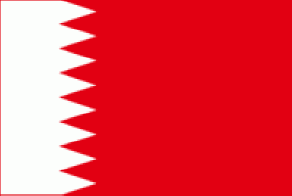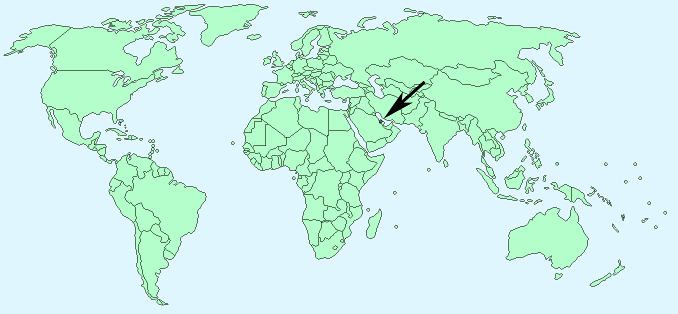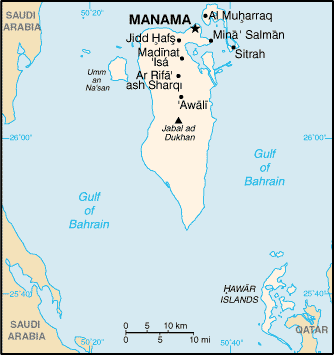Bahrain


Continent – Asia
Region – Western Asia
Size – 665 km²
Geography – Low desert plain
Language – Arabic, English, Farsi, Urdu
Religion – 81.2% Islam, 9% Christian, 9.8% other religions
Monetary Unit – Bahraini Dinar
Natural Resources – oil, natural gas, fish, pearls
Agriculture – fruit, vegetables; poultry, dairy products; shrimp, fish
Industry – petroleum processing and refining, aluminum smelting, iron pelletization, fertilizers, offshore banking, insurance, ship repairing, tourism

Neighbouring Countries – none – island
Population – 1,314,089 (2014) of which 235,108 non-nationals
Population Growth Rate – 1.4%
Average Life Expectancy – 74.6
Capital City – Manama (population 157,474)
Highest Mountain – No mountains, highest point – Jabal ad Dukhan (122 m)
Longest River – No major rivers
Climate – Hot, dry summers 22°C to 42°C, warm, dry winters 10°C to 20°C
Yearly Rainfall – 12 cm approx November to April
Plant Life – desert shrub, grass, date, palm,
Animal Life – jerboa (desert rat), gazelle, mongoose, hare, 14 species of lizard, 4 species snake
Bird Life – Lark, song thrush, swallow, tern, bulbul, hoopoe, parakeet, and warbler
Harvard Reference for this page:
Heather Y Wheeler. (2015). Bahrain. Available: https://www.naturalhistoryonthenet.com/Facts_Figures/Country_Facts/bahrain.htm. Last accessed Monday, July 18, 2016
Facts and Figures Pages
